In Delhi at this time of year you can either be fried or baked depending whether you are inside or outside. The daytime temperature is in excess of 40c and the sun is like a furnace that wilts all living things below, especially a couple of white-fleshed English who think that a temperature of 30c is a little too hot for comfort. The difficulty with travelling around the world is that it is not possible to be in the right place at the right time wherever we go but, so far, the weather has been kind to us. The effect on us is not just physical, as we try to survive the burning heat, but also mental as we try to maintain good humour not just with persistent locals whose sole aim is to empty my wallet, but also with each other. In any case, we have no excuse as we knew it would be hot but we still wanted to come to India.
Most of my preconceptions about the country have been blown away already. I had been here before on business but had been cocooned within a corporate itinerary, Debbie had travelled widely in the South of the country a few years ago BC (before children) when she was still young and innocent. Our expectation was that India is a country on the move, emerging as one of the great economic powerhouses of the world on the back of an educated and ambitious workforce and cutting edge technology. We have read articles praising the business acumen and culture of entrepreneurship of the Indians; we have read the IMF report that predicts the economy will grow at 9.5% this year and 8.5% next. All of us have ended up speaking to Indian call centres whenever we try to talk to our banks or credit card companies, conversing with people who speak English better than we do.
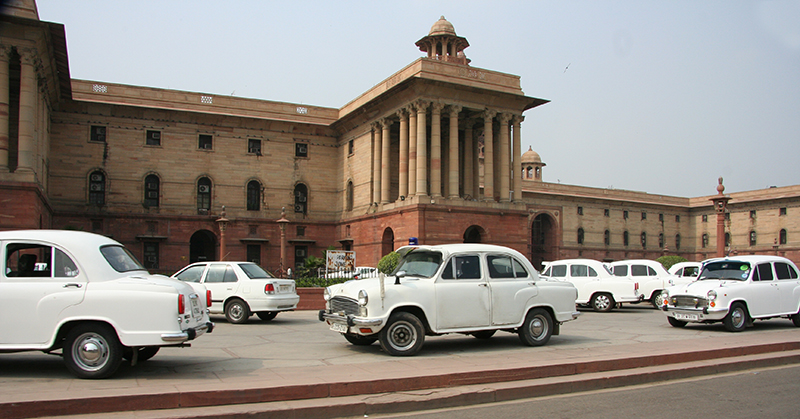 But it’s not like that at all. The roads are total chaos. They make Vietnam seem normal. Vehicles of all kinds nose their way around, carrying dents and scrapes of past encounters like a badge of honour. Some of them (the ‘official cars’) look as if they are a throwback to a bygone age: small, cramped, white, with quarter lights, large chrome door handles and that top heavy bubble of the 1950s. Everything that moves has a horn that is in constant use, whether or not there is any need for it, and the streets are a cacophony of noise that drowns any conversation.
But it’s not like that at all. The roads are total chaos. They make Vietnam seem normal. Vehicles of all kinds nose their way around, carrying dents and scrapes of past encounters like a badge of honour. Some of them (the ‘official cars’) look as if they are a throwback to a bygone age: small, cramped, white, with quarter lights, large chrome door handles and that top heavy bubble of the 1950s. Everything that moves has a horn that is in constant use, whether or not there is any need for it, and the streets are a cacophony of noise that drowns any conversation.
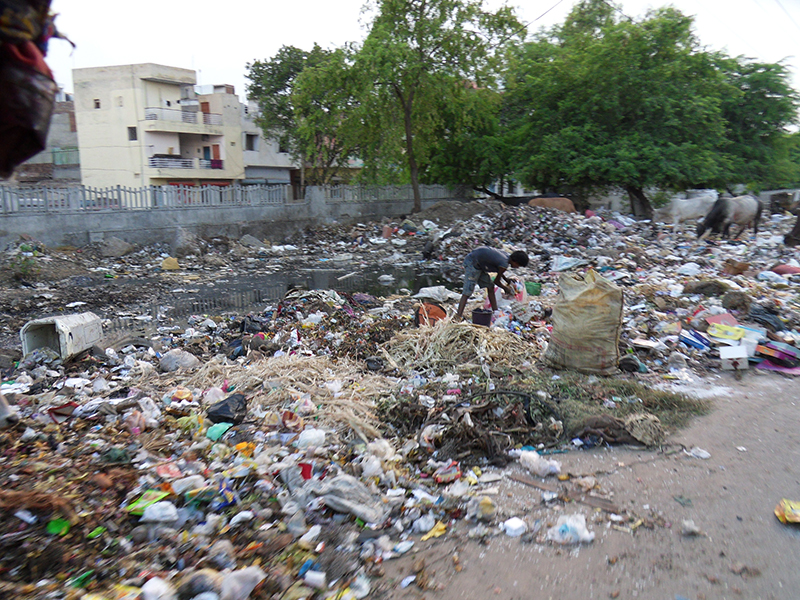 The roads themselves are in poor condition except around the most important buildings. Potholes alternate with speed bumps, piles of rubbish, mud and assorted animals (cows, pigs, goats and dogs). The edge of the road is marked by a line of filthy debris made up of discarded building materials, rubbish, human and animal waste. In the heat, it has a pungent and very unpleasant aroma.
The roads themselves are in poor condition except around the most important buildings. Potholes alternate with speed bumps, piles of rubbish, mud and assorted animals (cows, pigs, goats and dogs). The edge of the road is marked by a line of filthy debris made up of discarded building materials, rubbish, human and animal waste. In the heat, it has a pungent and very unpleasant aroma.
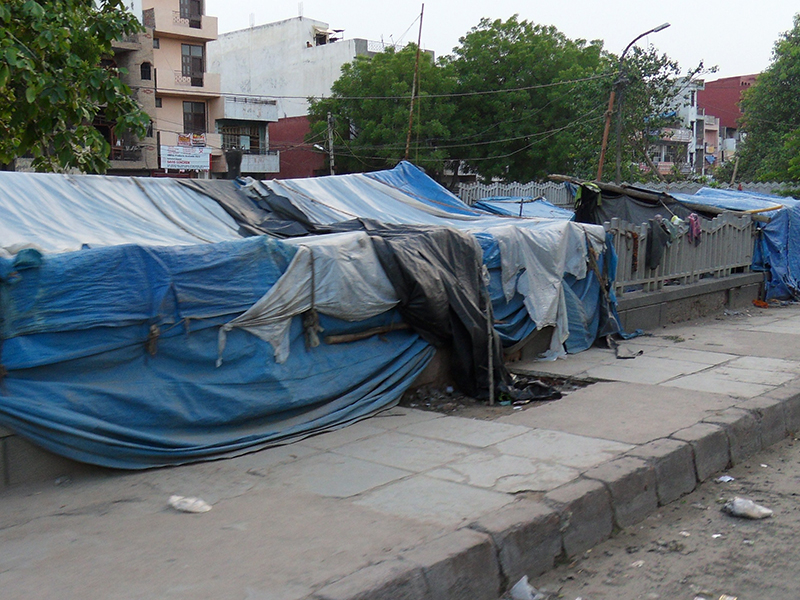 Despite being the country’s capital, essential services are few are far between. Power, clean water and sewerage are inadequate or non existent. Housing is only for the better off, the rest have to find shelter under bridges or tarpaulins stretched by the roadside or just sleep on the ‘pavement’. In all our travels thus far, we have not come across such inadequate conditions in which people pass their lives. Powerhouse of world economy? It doesn’t look like it.
Despite being the country’s capital, essential services are few are far between. Power, clean water and sewerage are inadequate or non existent. Housing is only for the better off, the rest have to find shelter under bridges or tarpaulins stretched by the roadside or just sleep on the ‘pavement’. In all our travels thus far, we have not come across such inadequate conditions in which people pass their lives. Powerhouse of world economy? It doesn’t look like it.
As for cutting-edge technology, while there are internet cafes that have broadband, it is impossibly difficult to find Wi-Fi. I write this having been in Delhi, Agra and Varanasi and most places have never heard of wireless connections. ‘Have you got Wi-Fi?’ we ask.
‘Wi-Fi?’ is the reply with a perplexed look as if we have switched from English to Martian.
‘Yes, Wi-Fi. It’s a wireless connection for our laptop.’
This is met with silence and a dumfounded look. ‘How about WeeFee?’ I try, getting desperate.
‘How can you have computers without wires?’ Is the reply.
We have also learnt that just because there may be computer wiring, it doesn’t mean that it works and, if it does, the connection is invariably lost, just when we need it, for an indeterminate period. It’s a similar story with the mobile phone. Outside Delhi, I may have full reception but can only send and receive text messages. So, I don’t know where this leading edge-technology is but I would like to know because I want to use it.
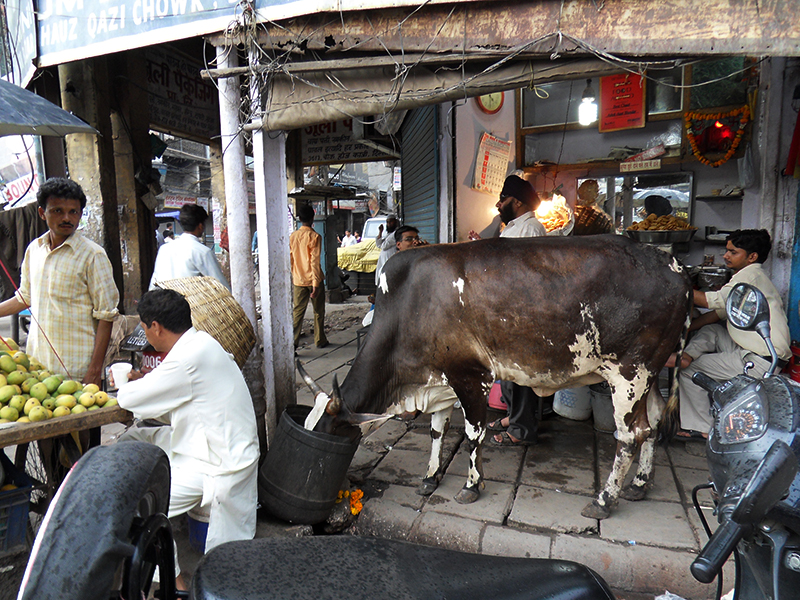 As for the culture of entrepreneurship, they have that in spades. Most streets will have an endless array of small, open fronted shops that sell all manner of things from a tiny space. They remain open for exceptionally long hours so as not to miss a sales opportunity and, if any country can be called a nation of shopkeepers, it must be the Indians.
As for the culture of entrepreneurship, they have that in spades. Most streets will have an endless array of small, open fronted shops that sell all manner of things from a tiny space. They remain open for exceptionally long hours so as not to miss a sales opportunity and, if any country can be called a nation of shopkeepers, it must be the Indians.
But that is the benefit of travelling to countries to see them first hand. Our western stereotypical views are often way off the mark and we have to wonder where they came from in the first place.
Another first impression is that India is not a cheap country to visit. It is on a par with Brazil and Australia in terms of cost. We usually expect to get a basic-but-clean room with aircon and hot water for around US$40 a night but we have found that we need to double this, or more, to have an acceptable place to sleep. With the heat and the dirt a cool, comfortable retreat becomes very important in order to maintain morale, especially at a time when we are becoming travel weary.
Our final observation is also a warning to any would be female travelers to this fascinating country: beware of the Indian male! Every western female gets stared at lecherously wherever she goes. It helps if they are covered up but it doesn’t prevent constant examination and unwanted groping. For a girl, it is as if she has landed naked in the middle of a crowd of 15 year olds. The men will walk past, having closely examined the rear view, and then turn around and stare from the front. On the train, all eyes are transfixed for the length of the journey. In a taxi, the driver will adjust his rear view mirror for the best view. In a crowd, groping is considered acceptable. It makes Debbie uncomfortable and it makes me want to punch their lights out. They don’t subject their own women to this (but they don’t treat them with respect either).
I am told by Indians that this attitude is caused by western TV and films in which western girls are free and easy with their favours and which leads them to think that every western female is a nymphomaniac. There is some element of truth in this perhaps but I think that the attitude of men to women is inversely proportional to the amount of female flesh covered by clothing. The more that females are hidden behind clothing the lower their standing in society.
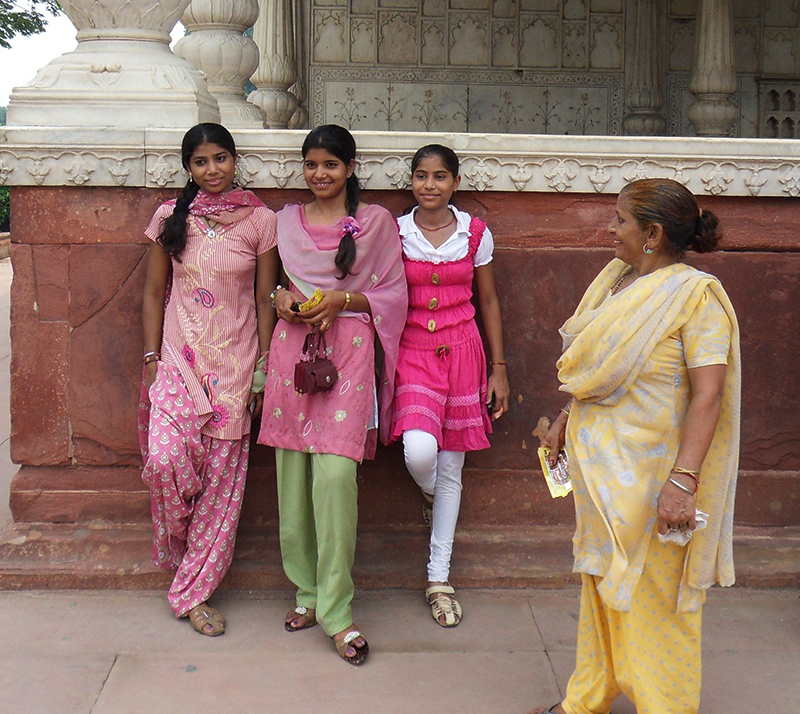 All that aside, India is a buzzy, vibrant place, full of energy and vitality. The women provide a welcome splash of bright colour in their varying forms of traditional clothing. They float down the streets with their scarves trailing behind them as they go about their daily chores. The men, conservatively dressed, try to make enough money to feed their (usually large) family.
All that aside, India is a buzzy, vibrant place, full of energy and vitality. The women provide a welcome splash of bright colour in their varying forms of traditional clothing. They float down the streets with their scarves trailing behind them as they go about their daily chores. The men, conservatively dressed, try to make enough money to feed their (usually large) family.
The evidence of the British colonial influence is fading fast. Less than 60 years ago the spacious, quiet and planned city of New Delhi was the pride of late colonial India, while immediately to the north, the crowded lanes of Old Delhi resonated with the sounds of a medieval market. They have now morphed into one city of over 22 million people as the city’s tentacles spread out in all directions.
New Delhi was built by the British, designed by Lutyens, and purposely constructed to move the capital from Calcutta to Delhi. Built to house 70,000 people with lots of room for expansion, it was inaugurated as recently as 1931. It was designed to represent the glory of the Empire: ‘First and foremost it is the spirit of British Sovereignty which must be imprisoned in its stone and bronze.’ Lutyens built a fundamentally classic structure but incorporated some Indian motifs in what some called a unique synthesis of the two traditions. While I am not so sure about this synthesis, the buildings are magnificent and glorious and appropriately grand and imposing for the seat of any government.
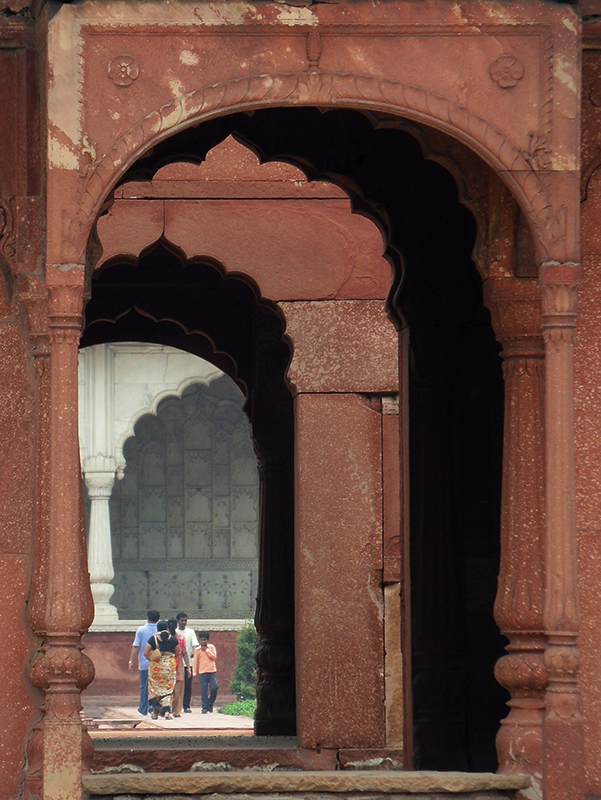 The other grand sites of Delhi date back to earlier times when the city was the eastern capital of the great Islamic Mughal Empire. Originating from Arabia, the Mughals captured most of northern Indian during the 16th century and consolidated their conquests by building well fortified palaces. Usually referred to as the Red Forts, they are magnificent, imposing structures constructed from red sandstone blocks with the palace inside made from marble.
The other grand sites of Delhi date back to earlier times when the city was the eastern capital of the great Islamic Mughal Empire. Originating from Arabia, the Mughals captured most of northern Indian during the 16th century and consolidated their conquests by building well fortified palaces. Usually referred to as the Red Forts, they are magnificent, imposing structures constructed from red sandstone blocks with the palace inside made from marble.
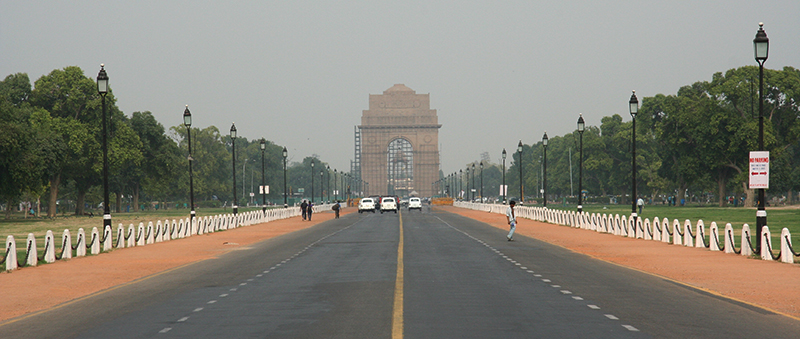 The Delhi Lal Qila (Red Fort) was started by Shah Jahan in 1639 and completed 9 years later. The dominating impression is very powerful particularly the Lahore Gate that faces Pakistan. This later became a symbol for the nationalist movement against the British who wanted to see India’s flag flown atop this grand entrance, a feat finally achieved in 1947. Passing through the gate, we are confronted by a vaulted arcade with a long line of stalls that originally sold goods to the royal household but now hawk tourist wares. This leads to the public area at the far end of which stands the Diwan-i-Am where the Emperor would sit in judgment on the complaints and disputes of his subjects.
The Delhi Lal Qila (Red Fort) was started by Shah Jahan in 1639 and completed 9 years later. The dominating impression is very powerful particularly the Lahore Gate that faces Pakistan. This later became a symbol for the nationalist movement against the British who wanted to see India’s flag flown atop this grand entrance, a feat finally achieved in 1947. Passing through the gate, we are confronted by a vaulted arcade with a long line of stalls that originally sold goods to the royal household but now hawk tourist wares. This leads to the public area at the far end of which stands the Diwan-i-Am where the Emperor would sit in judgment on the complaints and disputes of his subjects.
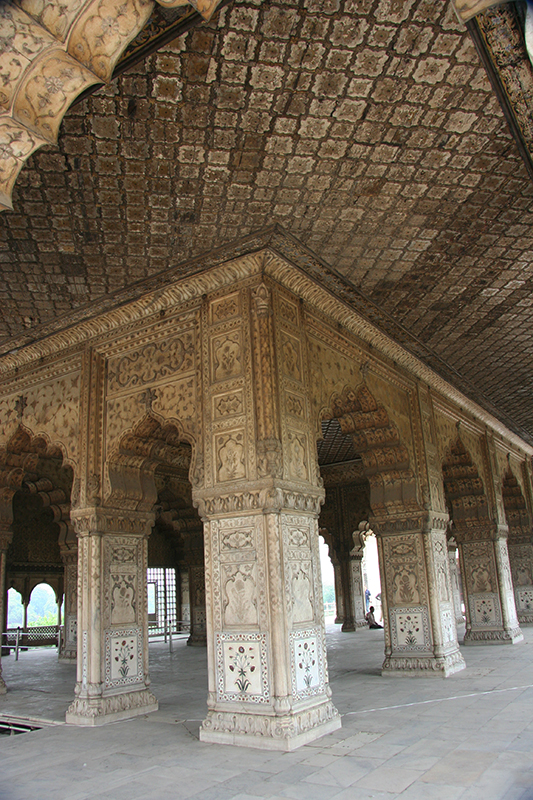 Behind this area is the royal palace where the buildings become lined with white, opulently carved marble that was inlaid with semi precious stone motifs. The centre piece is the Diwan-i-Khas, or the hall of private audience, which was the Emperor’s private meeting chamber. Here stood the Peacock Throne, a magnificent centerpiece that exuded power and wealth. It is no longer here, having been taken away by Nadir Shah, a Turk who after conquering Persia, sacked Delhi in 1739. The throne was broken up but some of the jewels are said to have been incorporated into the late Shah of Iran’s throne.
Behind this area is the royal palace where the buildings become lined with white, opulently carved marble that was inlaid with semi precious stone motifs. The centre piece is the Diwan-i-Khas, or the hall of private audience, which was the Emperor’s private meeting chamber. Here stood the Peacock Throne, a magnificent centerpiece that exuded power and wealth. It is no longer here, having been taken away by Nadir Shah, a Turk who after conquering Persia, sacked Delhi in 1739. The throne was broken up but some of the jewels are said to have been incorporated into the late Shah of Iran’s throne.
The open grassy garden areas around the palace buildings that flowed with running watercourses would have offset the opulent marble buildings perfectly at the height of the reign of the Mughal Emperors. It moved the poet Amir Khusras to write: ‘If there be a paradise on earth it is here, it is here, it is here.’ Nowadays, unfortunately, the whole area has been allowed to dilapidate and it is sad to see the neglected state of this once imposing fort.
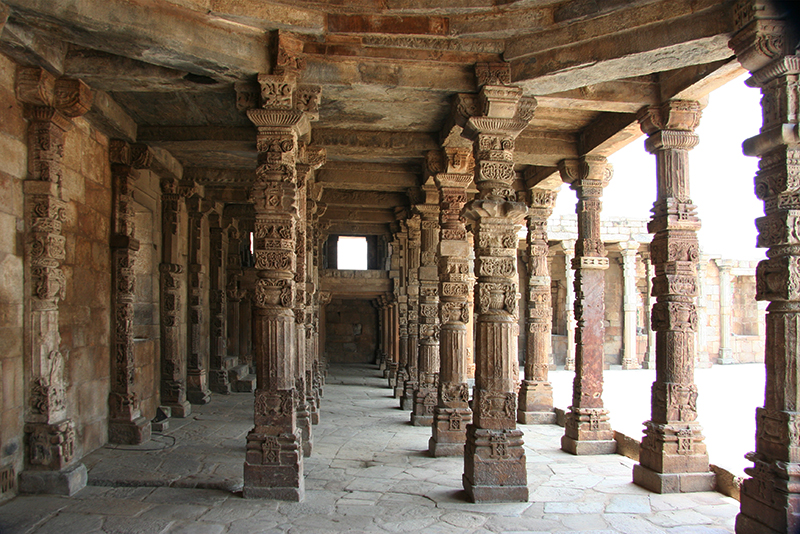 There are two other imposing sites. The first is Qutb Minar which holds the first monuments of Islamic rule in India and are fine examples of Afghan architecture. The Qutb Minar itself is a piercing tower of victory built in 1193 to commemorate the defeat of the last Hindu kingdom in Delhi. Due to an earthquake, the 73 metre tower leans at a slight tilt and, no doubt, will one day become India’s answer to the leaning tower of Pisa. Around the tower are a number of 12th century tombs, the remains of an early Madrasa, the first Mosque to be built in India and the superb Alai Gateway, as well as 19th century summer palaces and tombs of the last kings of Delhi, who succeeded the Mughal Emperors. The place is mostly ruins and has an unloved feel about it that is common with heritage sites in this country.
There are two other imposing sites. The first is Qutb Minar which holds the first monuments of Islamic rule in India and are fine examples of Afghan architecture. The Qutb Minar itself is a piercing tower of victory built in 1193 to commemorate the defeat of the last Hindu kingdom in Delhi. Due to an earthquake, the 73 metre tower leans at a slight tilt and, no doubt, will one day become India’s answer to the leaning tower of Pisa. Around the tower are a number of 12th century tombs, the remains of an early Madrasa, the first Mosque to be built in India and the superb Alai Gateway, as well as 19th century summer palaces and tombs of the last kings of Delhi, who succeeded the Mughal Emperors. The place is mostly ruins and has an unloved feel about it that is common with heritage sites in this country.
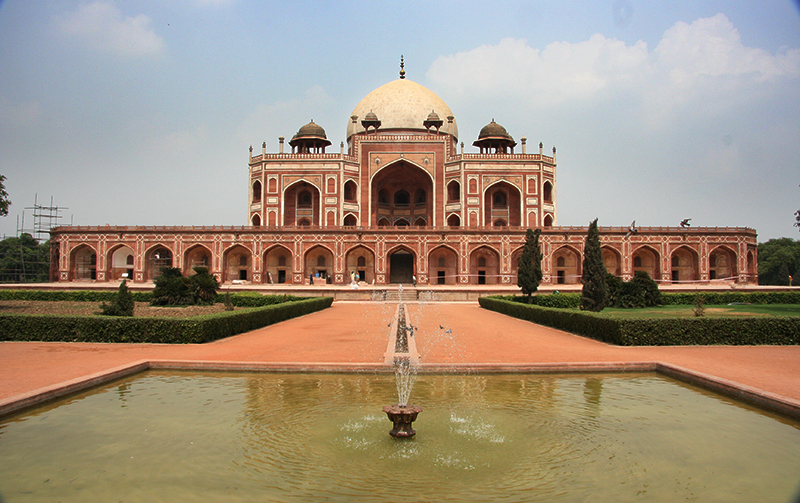 The second noteworthy sight is Humayun’s Tomb, built in the mid 16th century for the Emperor Humayun by his Persian born senior wife Haji Begum. The design is the forerunner of the Taj Mahal and the construction, although not in the same class as the Taj, is still impressive and imposing set in the centre of a large, walled garden.
The second noteworthy sight is Humayun’s Tomb, built in the mid 16th century for the Emperor Humayun by his Persian born senior wife Haji Begum. The design is the forerunner of the Taj Mahal and the construction, although not in the same class as the Taj, is still impressive and imposing set in the centre of a large, walled garden.
The surprise of our sightseeing was the Sikh Temple of Gurdwara Bangla Sahib. Hidden within the jumble of buildings of Old Delhi, it is easy to miss from the outside but, within the confines of its holy walls, is a haven of peace and tranquility. It has a large courtyard outside the temple with a flagpole wrapped in gold, the sign of a seikh temple. To the side is a huge pool of holy water used for bathing before entering the temple and believed to have magical healing properties. Its dark, dirty water is not the least bit inviting but many pilgrims wash themselves nonetheless and even drink it after visiting the temple.
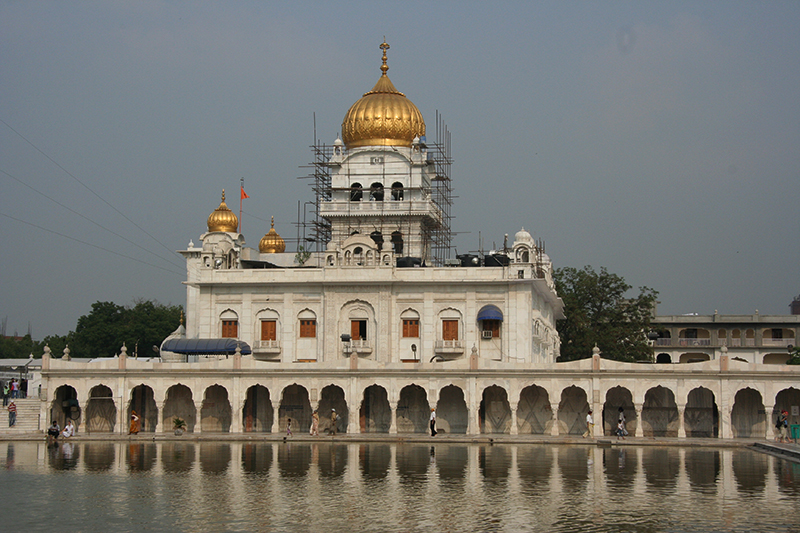 The temple itself has striking golden domes and is constructed on the site where the 8th Sikh guru, Harkrishan Dev, stayed when he visited Delhi in 1864. Inside is a large carpeted area in the centre of which stands a low table supporting a copy of the Sikh Holy Book that pilgrims bow and pray before. A three piece band plays music as one of them sings verses of the book while a hundred or so people sit on the floor and listen. To one side of the temple stands a mess hall where a giant kitchen serves 2,000 free meals twice a day to all comers, no matter what their religion.
The temple itself has striking golden domes and is constructed on the site where the 8th Sikh guru, Harkrishan Dev, stayed when he visited Delhi in 1864. Inside is a large carpeted area in the centre of which stands a low table supporting a copy of the Sikh Holy Book that pilgrims bow and pray before. A three piece band plays music as one of them sings verses of the book while a hundred or so people sit on the floor and listen. To one side of the temple stands a mess hall where a giant kitchen serves 2,000 free meals twice a day to all comers, no matter what their religion.
Never having been in a Sikh temple before, we found it a fascinating and very welcoming place where Sikh elders were very happy to explain to us the workings of their religion. In a true spirit of learning, they answered questions and guided us around obviously (and rightly) proud of all they had to show.
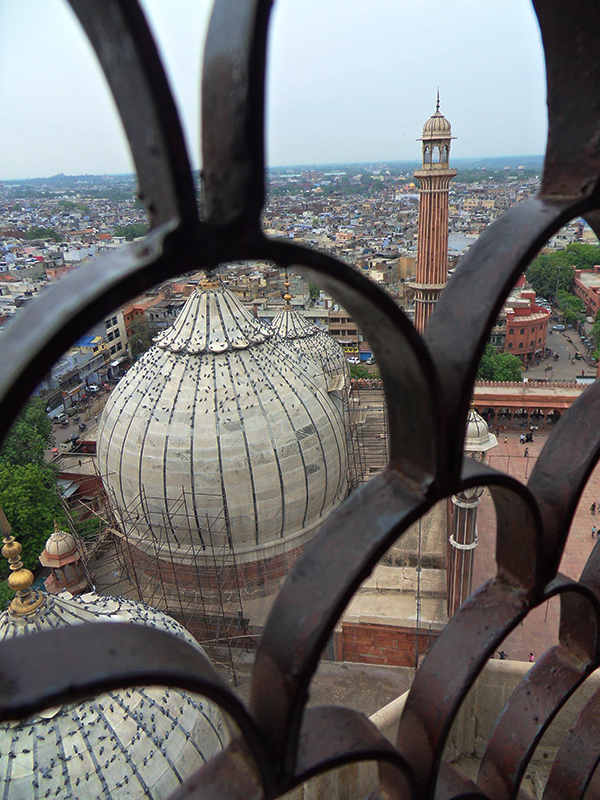 In contrast, our visit to the Jama Masjid Mosque was a bit of a bun fight. It is the largest Mosque in India and the final extravagance of Shah Jahan who began construction in 1644. It has two minarets constructed of alternating vertical strips of red sandstone and white marble (that we could climb for some interesting views of the city) and imposing gateways and towers that are intricately and delicately carved. It is a chaotic and congested site full of people wandering around looking for tourists to fleece. It doesn’t have the feel or the tranquility of a holy place.
In contrast, our visit to the Jama Masjid Mosque was a bit of a bun fight. It is the largest Mosque in India and the final extravagance of Shah Jahan who began construction in 1644. It has two minarets constructed of alternating vertical strips of red sandstone and white marble (that we could climb for some interesting views of the city) and imposing gateways and towers that are intricately and delicately carved. It is a chaotic and congested site full of people wandering around looking for tourists to fleece. It doesn’t have the feel or the tranquility of a holy place.
We were not sorry to leave it and move on for a spot of late luncheon at a hole-in-the-wall restaurant called Karim’s. It is reputedly the best non 5-star restaurant in Delhi. It will never manage a 5 star rating with tiled walls, floors littered with debris swept from vacated tables, steel tables and plastic chairs but the food, eaten using hands, is very good and surprisingly inexpensive. Definitely an experience not to be missed by any visitor to Delhi and a good place to fill up with water for the body’s constant battle against the heat.

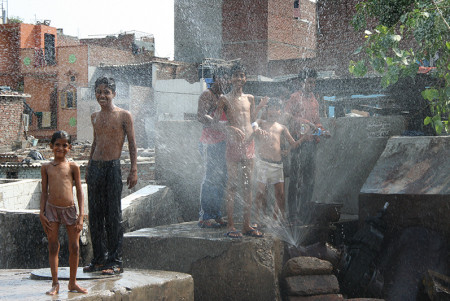
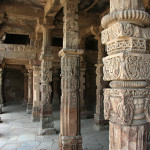
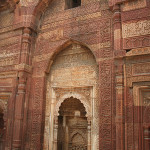
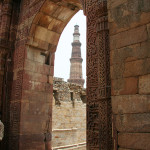
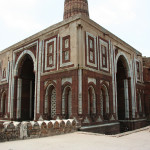
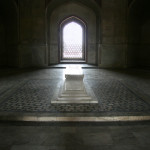
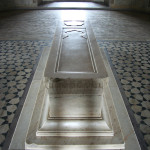
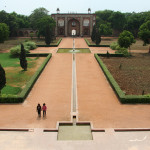
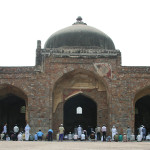
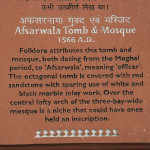
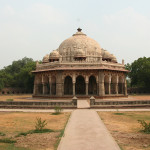
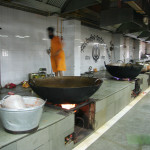
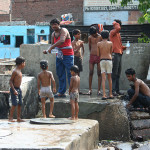
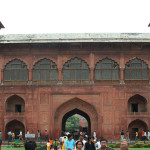
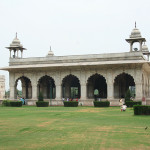
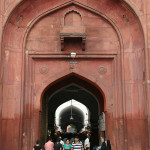
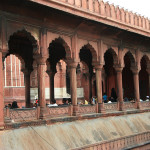
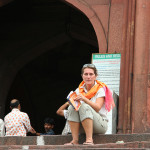
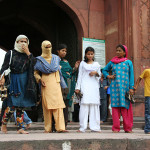

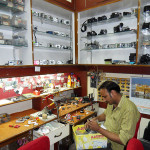
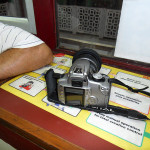
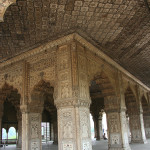
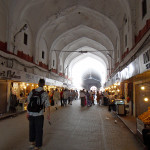
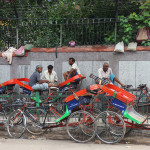
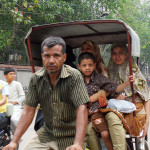
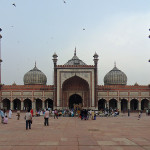
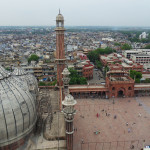
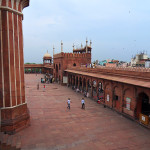
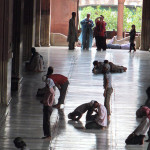
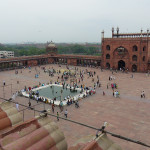
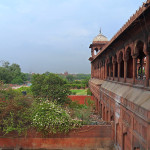
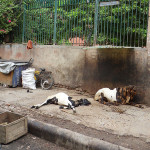
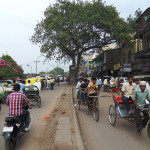
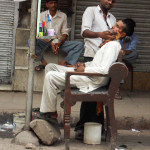
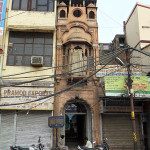
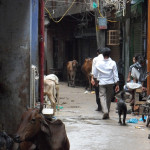
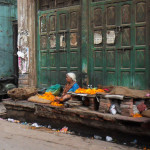
No comments yet.